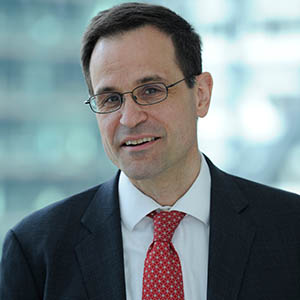Although geopolitical risks are still keeping executives awake at night, there has been a remarkable turnaround in some countries of the region, thanks in large part to structural reforms—implemented early and strongly.

For the nations of Central and Eastern Europe (CEE), geopolitical uncertainties abound, topped by Russia’s incursions into the Ukraine and its possible designs on other former Soviet states. But for CEE nations that have eased up on economic restrictions while ramping up legitimate structural reforms, the picture is brighter. Business is picking up, credit is flowing again—and investor sentiment is turning bullish.
The turnaround in Poland, Hungary, the Czech Republic and Slovenia is already underway—seen in a renewed flow of capital. Gunter Deuber, head of CEE bond and currency research at Raiffeisen Bank International, notes that, “From late 2014 there has been a tangible increase in bank lending.”
Deuber sees Central European economies’ gross domestic product expanding by around 3% in the coming year. He’s not alone. Scores of economists are upping earlier forecasts, which generally pegged growth at around 2.5%.
Alexander Lehman, lead economist for the CEE region at the European Bank for Reconstruction and Development (EBRD), points to a recovery in investment, most notably in Hungary and Poland. “The main driver of growth across the region,” he notes, “has been domestic consumption buoyed up by wage growth and declining prices.”
SHADOWING THE EURO
Certainly, the sharp fall in energy prices has made many consumer goods cheaper. In addition, the European Central Bank’s [ECB] quantitative easing program continues to keep borrowing costs at historic lows in Europe and CEE countries. And unlike in Western Europe, “there is not much fear of deflation on the street,” Deuber notes.
Should quantitative easing boost demand in the eurozone it will have a knock-on effect in many CEE countries. But the sharp depreciation of the euro could dampen demand in countries like Poland, the Czech Republic or Hungary. All three retain national currencies.
“Most CEE exports go to the eurozone,” Deuber notes, “so it is to be expected that central banks [in those countries] will try to slow their currency’s appreciation against the euro.”
Toward that end, some central bankers in the region are manipulating their currencies to match the euro’s price fluctuations. Still, there are concerns that the ECB’s ultra-loose monetary policy could lead to inflows into the CEE area and boost local currencies. Poland is particularly at risk.
SPREADING THEIR BETS

Indeed, not all CEE countries are benefiting from global trends. The collapse in commodity prices has hit Russia hard. A number of nations in the region depend on exporting goods and services to Russia. Therefore, a prolonged economic slump in Russia—and a plummeting ruble—would slam a number of countries in the region, including Belarus, the Baltic States and Serbia.
But, Deuber notes, the dependence on Russia is easing up as nations in Central Europe target other markets. At this point, about 7% of Poland’s exports go to Russia. Fully 25% go to Germany.
Moreover, global multinational corporations continue to set up operations in the CEE. Most are attracted by easy access to European Union (EU) consumer markets. Low-cost, skilled labor is another big consideration.
Consider this: A quarter of the workforce in CEE nations now have college degrees, while the numbers studying abroad has doubled since the late 1990s. Those who study abroad generally score much higher in problem-solving than those educated locally. The education gap is narrowing, though. “While there have been skills constraints at higher levels,” Lehman says that “home universities and colleges are now better targeting the needs of industry.”
In fact, CEE countries such as Hungary, Slovakia and the Czech Republic are now vital cogs in global supply chains. Volkswagen and Fiat have businesses in the region. And as Juraj Kotian and the Macro/FI research team at Erste Group point out, Asian manufacturers like Kia Motors and Samsung Electronics have substantially boosted their CEE footprint.
MOVING IN
And while CEE countries are getting wealthier—GDP per capita has jumped from 49% of the EU-15 average to 65%—”the cost advantages,” Deuber says, “remain in place.” Why? “Improved productivity and mobility of human capital.”
Of course, cost advantages will eventually diminish. But a well-educated workforce can offset that trend and remain a powerful draw for foreign direct investment. Traditional strengths in mathematics-based sciences have already attracted global IT companies like Microsoft to the region. And now more investment is going into outsourcing centers, mainly for back office, telecoms and the financial sector.
Further improvements in energy security and efficiency are planned. Lehman notes that the disbursement of EU structural or regional funds that have already been approved is likely to speed up this year.
“For countries with large funds to come,” he says, “this will provide a boost to public investment and indirectly to private sector investment.” n
Key Regional Risks and Their Likely Impact |
||
|---|---|---|
|
Source of Risks |
Relative Likelihood |
Relative Impact |
|
Lower-than-anticipated potential growth and persistently low inflation in the euro area |
High |
Medium |
|
Surges in global financial |
High |
Medium |
|
Sustained Ukraine/Russia tensions depressing business confidence and heightening risk aversion |
Medium |
Medium-High |
Source: IMF



